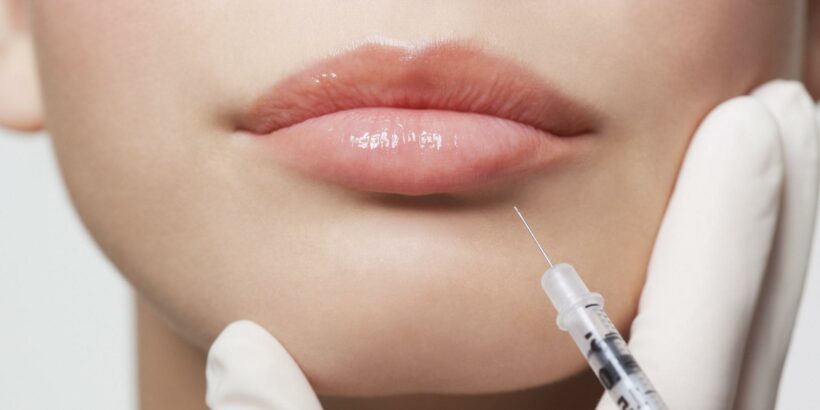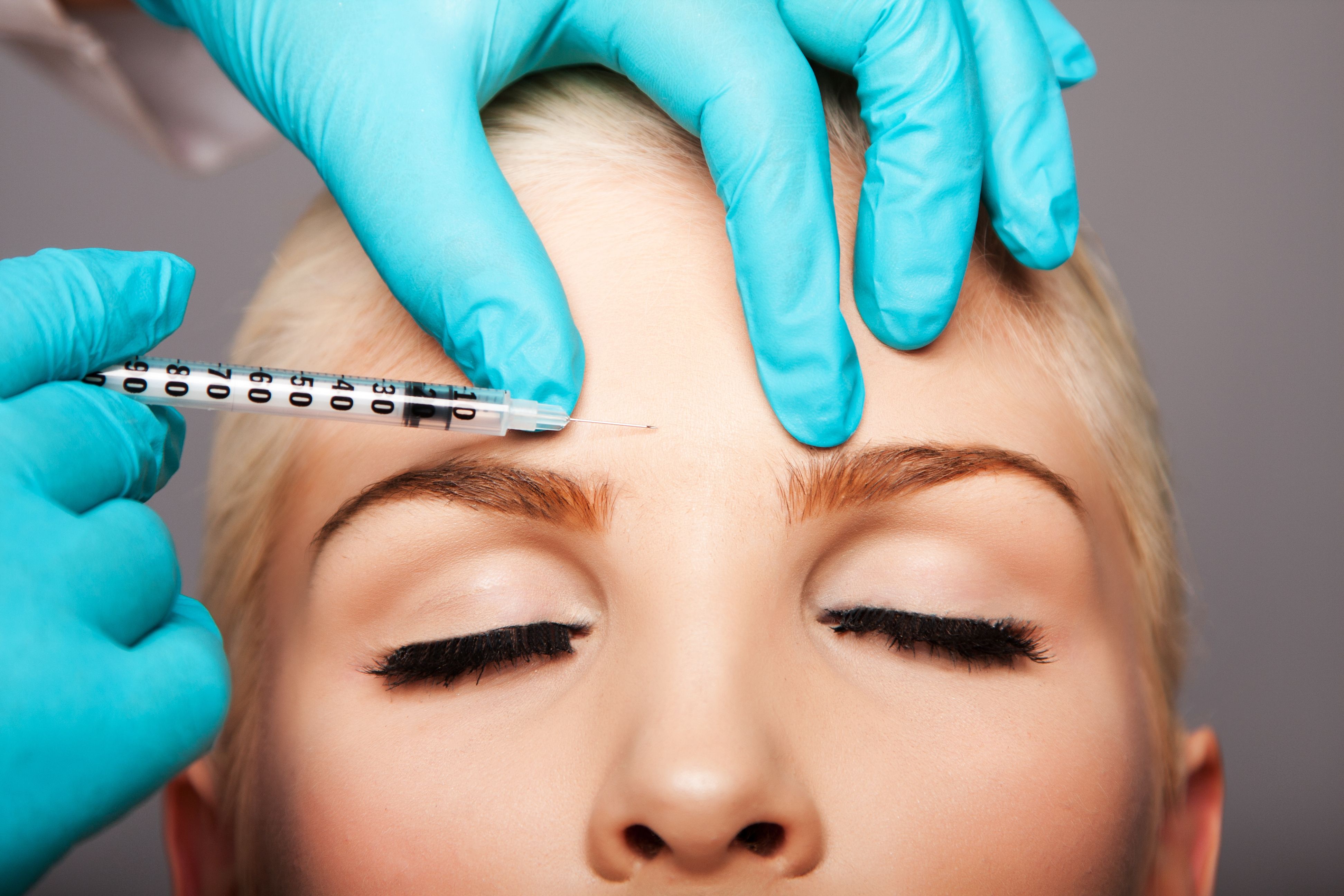Whether it’s a side effect of selfie culture or Kylie Jenner, one thing is certain: lip augmentation has never been more popular.
Dermal fillers have been used for more than four decades, and other forms of lip enhancement, like silicone implants, have been around even longer than that. Today’s lip injections have come a long way since the bovine collagen of the 1970s. But it was the introduction of hyaluronic acid fillers nearly 20 years ago that really ushered in mainstream attention.
Even so, when many people think about lip injections today, images of supersized, fish-like pouts come to mind. Throw in a long list of myths and seemingly endless misinformation about the noninvasive procedure, and you’re likely more confused than ever, hesitant to do it, or even convinced it’s not for you. But rest assured, lip filler is far more straightforward than it may seem. Below, we break down all the details of lip injections, from choosing a provider and a product to duration and possible side effects.
What are lip injections, anyway?
“Lip injections or lip fillers are injections to the lips with hyaluronic acid fillers to augment, restore volume, improve lip shape, and give a smoother, more hydrated appearance,” explains Dr. David Shafer, a board-certified plastic surgeon in New York City.
“There are two general groups of patients who seek lip filler: younger patients, who wish [for] fuller lips or to improve the balance in size between the upper and lower lips, and older patients, who wish to replenish receding lips and reduce lipstick lines—also called “barcode lines’—that extend up from the lips,” says Dr. Heidi Waldorf, a board-certified dermatologist in Nanuet, New York.
And while the mere utterance of the words “lip injections” may have you picturing a lineup of Instagram girls with obviously tweaked, overfilled pouts, the procedure is 100 percent customizable, so you can do as much or as little as you please.
What’s the difference between each type of filler?
The fillers most commonly used for lip injections are Juvéderm, Juvéderm Ultra, Juvéderm Ultra Plus, Juvéderm Volbella, Restylane, and Restylane Silk. And while they are all hyaluronic acid-based, each one differs from the next in their thickness and their look in lips.
“In my office, I like to use the Juvéderm Collection of Fillers, as they have the most diverse collection,” Dr. Shafer says (Dr. Shafer is a spokesperson for Allergan, the maker of Juvéderm). “Each filler is designed for a different purpose, so for instance, we use Juvéderm Ultra XC on patients who want more volume. And for patients who want very subtle changes, Juvéderm Volbella, which is the thinnest filler in the collection, is the answer.”
Ultimately, choosing which filler is right for you will depend on your personal goals, but your doctor should guide you with information on each. After all, they are the expert!
How should you choose a provider?
“Patients must remember that getting injectables is not equivalent to a hair or makeup appointment,” warns Dr. Waldorf. “Injectables are a cosmetic medical procedure with real risks that should be done in a medical environment.”
She suggests looking for a physician who’s board-certified by the American Board of Medical Specialties in core cosmetic specialties, like dermatology or plastic surgery. “Be sure that during the consultation, the physician evaluates your full face, not only your lips,” she adds. “And if the aesthetic of the physician and staff doesn’t fit yours, that is not the place for you.”
How long does filler last?
As a reminder, filler is not permanent. Each type of lip injectable boasts different longevity. At the end of the day, every person’s body metabolizes it differently. But there are certain benchmarks you can expect—usually between six months and one year, depending on the filler used.
However, some filler will linger in the body, meaning your lips retain a little bit every time, so the more times you get lip filler, the longer you can wait between appointments.
“The way I explain it to patients is that you don’t want to wait to fill up the gas until your gas tank is completely empty,” Shafer says.”Instead, you go when you’re almost out or when there is a gas station conveniently there when you know you’re always out of gas, so you’re never at the starting point again.” Therefore, as more time passes, you theoretically would need to get filler less frequently.
How much does lip filler cost?
Like most cosmetic procedures, the price of lip injections depends on quite a few factors. But one visit normally runs between $1,000 and $2,000. “Some physicians charge by the amount of filler used and others, by the area,” Dr. Waldorf says. “However, many people need injections to balance and support the area around the mouth prior to treating the lips, which will require additional treatment.”
And while lower price tags with less qualified providers may sound appealing, don’t forget that this is a medical undertaking. It’s not the place to try to score a discount.
What should you do to prepare before getting lip filler?
One of the best parts about lip filler is that it’s noninvasive—but that doesn’t mean it doesn’t require preparation. “I tell my patients to avoid taking blood thinners, like aspirin, in the week before any injections in order to reduce the chances of bleeding and bruising,” explains Dr. Shafer. “Also, if they have any active infections, such as acne around the mouth or viral infections, they should wait until these have resolved.”
Patients should also avoid dental cleaning or procedures, vaccinations, and anything else that may increase local or blood stream bacteria in the days leading up to lip filler. Anyone with a history of cold sores will be given a prescription for antiviral medication to take the morning and evening before and after injection, says Dr. Waldorf. And if you develop a cold sore in the week before a filler appointment, you should reschedule.
In addition to cold sores, active herpes, or inflamed acne around the mouth that make filler a no-no until the skin is healed, there are a few other scenarios that put it off limits, such as if you’re pregnant or breastfeeding. “While hyaluronic acid in lip fillers is normally found in the body, we still don’t take any chances with pregnant patients,” Dr. Shafer says. “However, if you recently had fillers and found out you are pregnant, rest assured that there is no reason for alarm.
“Additionally, patients with previous lip surgery such as cleft lip surgery or other oral surgeries should only be injected by advanced and experienced injectors as the underlying anatomy may not be straightforward,” Dr. Shafer says. If you’ve previously had lip implants, you may want to consider having them removed before lip injections. Also, anyone on blood thinners has an increased risk of bruising. Finally, Dr. Shafer adds that fillers are FDA approved for ages 21 and older, so kids in middle and high school aren’t candidates for dermal fillers.
What are the potential side effects of lip injections?
As with any in-office procedure involving needles, there’s a risk of swelling and bruising.“While the lips can feel lumpy initially, primarily due to swelling and bruising, that generally resolves within one to two weeks,” says Dr. Waldorf.
There is also the risk of delayed-onset inflammatory nodules, which may occur months or years after injection. “These have mostly been associated with dental cleanings, vaccinations, and severe viral injections, but most have no identifiable trigger,” Dr. Waldorf notes.
The most serious complication occurs if filler blocks a vital blood vessel, which can cause ulceration, scarring, and even blindness. While there will always be risks, the chance of more severe side effects happening is extremely slim. Even so, it’s important to go to a provider who is qualified and knows what they’re doing to reduce the risk of any complications.
What can you expect from post-filler recovery and aftercare?
“Assume your lips will swell a lot, and be happy if swelling is minimal to none,” Dr. Waldorf advises. Bruising typically only develops 24 to 48 hours after injection, if at all, and ice and oral or topical arnica can reduce bruising or stop it from forming.
“If a patient has significant bruising, they can return to the office in two days for V-beam laser (pulsed dye laser) treatment of the bruise. It will get darker immediately but is more than 50% reduced by the next day,” she says. Excessive swelling can be treated with a course of oral prednisone.
Most modern hyaluronic acid fillers contain anesthetic. And doctors will apply additional topical anesthetic, so you should expect to experience numbness and even inability to move your mouth or tongue for up to an hour after injection. “Avoid hot liquids or food until sensation and movement returns,” Dr. Waldorf notes. “If you experience severe pain, a white and red lacy pattern, or scabbing, call your physician immediately because that can be a sign of vascular occlusion, a medical emergency.”
What should you do if you don’t like your lip filler results?
Be patient: It can take up to a week to see your actual lip injection results without any swelling or bruising. But if you don’t like them, you can fix it fast. “The great thing about hyaluronic acid fillers is that they are dissolvable with a special enzyme if needed,” Dr. Shafer says. Your provider will inject Hyaluronidase into your lips, and it will break down fillers within the next 24 to 48 hours.
But keep in mind that getting rid of your filler may not be the perfect solution. If your filler is uneven or misshapen, adding additional products may actually be a better plan of action.
Source: Read Full Article


